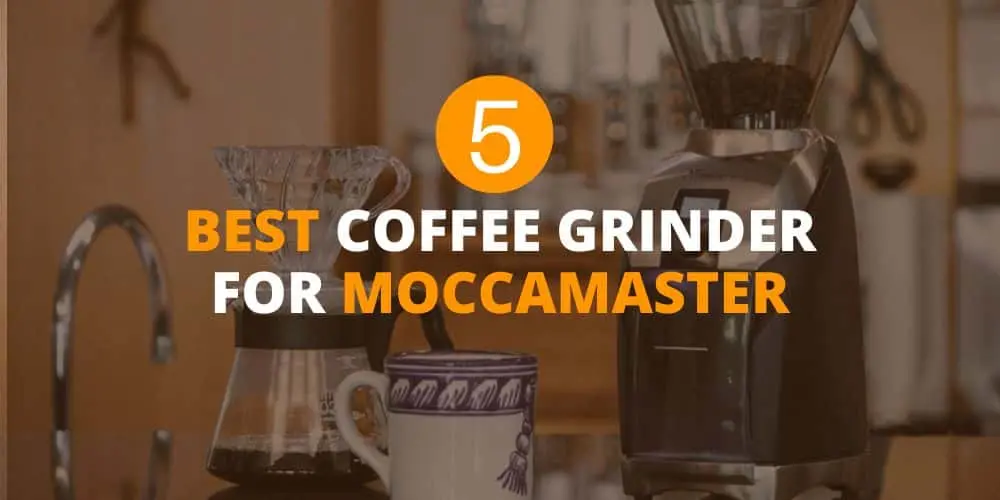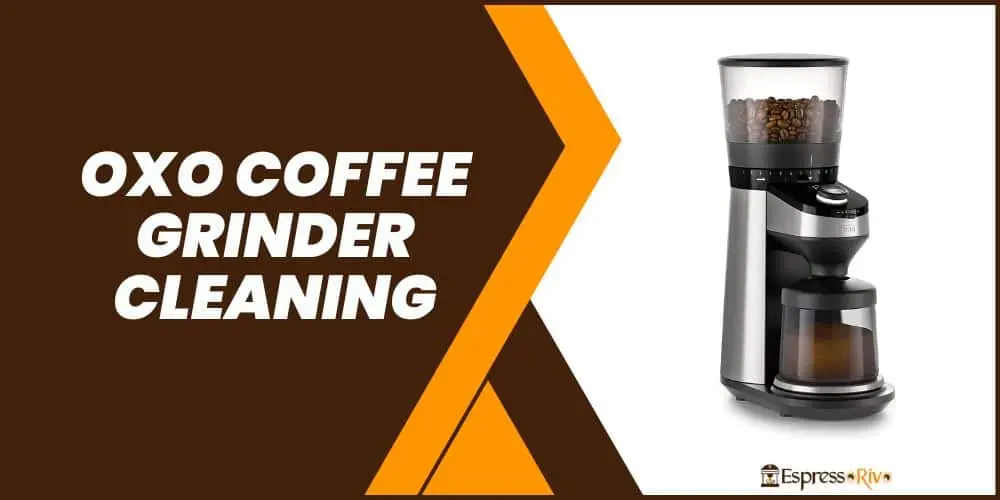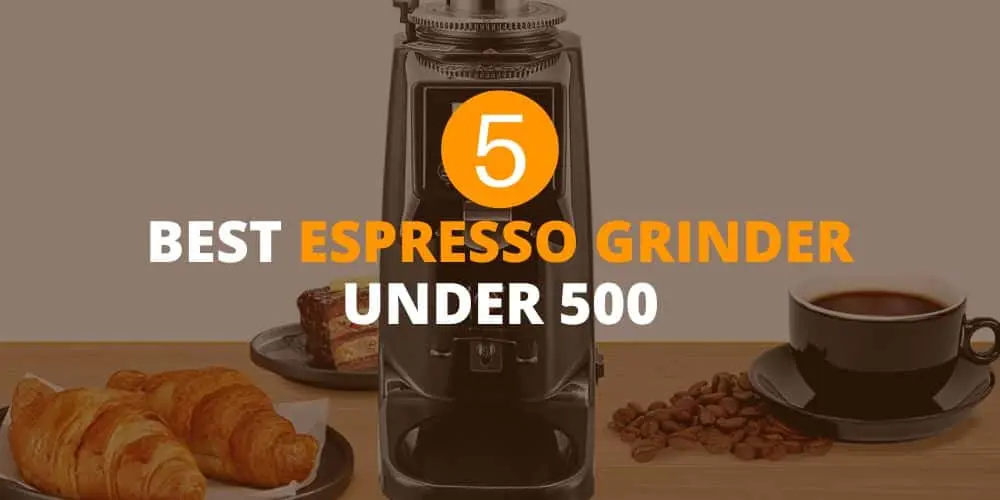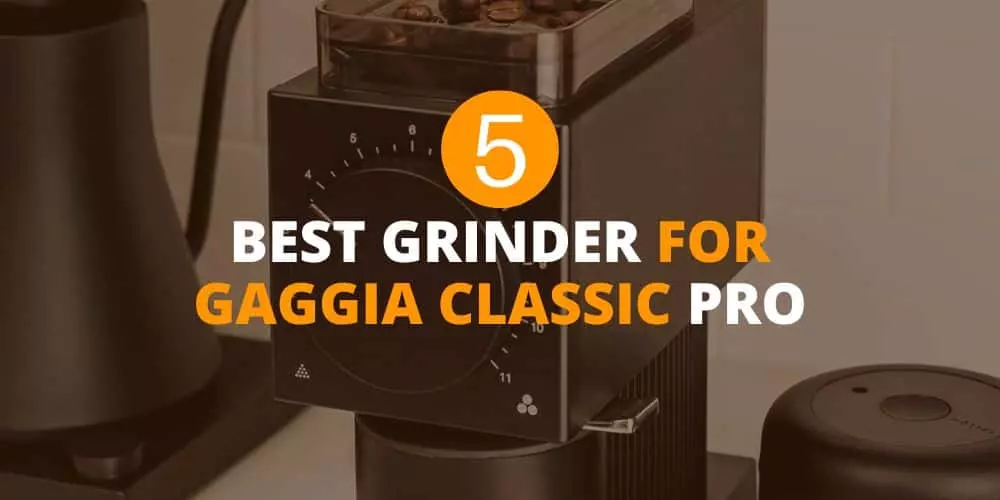How much should I grind the coffee beans? Surely if you find out more about this and the types of grind that there are, you will enjoy an excellent cup of coffee.
Grinding is essential when preparing a delicious cup of coffee. Grinding the beans before preparing coffee also makes a big difference as well as the thickness of the grind, since it is not the same to prepare espresso as a filter coffee.
In this coffee grinding guide, we will focus on how to grind coffee beans and its thickness.
Keep reading…
Why do we grind coffee?
To adapt the contact surface of the water with the coffee so that the extraction is adequate to the extraction system when the water passes through the ground coffee.
The degree of coffee grinding will depend fundamentally on the coffee machine that we are going to use to prepare the coffee.
Reasons to grind coffee beans at home
Although you can buy coffee already ground, there are many technical reasons why you grind coffee beans at home:
- Coffee beans keep better, longer. (As coffee is ground, it quickly becomes stale because in contact with the air it loses up to a third of its aromas and flavors in just two days).
- Coffee beans keep better, longer. (As coffee is ground, it quickly becomes stale because in contact with the air it loses up to a third of its aromas and flavors in just two days).
They are two powerful arguments so that you have your own grinder and can carry out the specific grinding.
What is the proper grind
Fine grinding or coarse grinding, coffee is based on an elemental principle: a liquid element (water) passes through a solid element (the ground coffee bean) and extracts its properties to transform into something else.
If the coffee bean is lightly ground and is too thick, the water will pass through it quickly. It will not be able to extract all its values and the drink will be light and not very concentrated.
If the coffee bean is too ground and is too fine, the water will pass through it with great difficulty, it will dissolve the aromatic components and the drink will be bitter (over-extracted).
The thickness of the grind will directly influence how fast the espresso or filtered coffee falls, and directly affects the quality and flavor of your coffee.
- Fine grinding: It takes longer for the water to pass through the coffee and it brews more.
- Coarse grinding: Water encounters less resistance and passes faster.
Note: Ground coffee easily absorbs the aromas from the environment.
Types of grind for your coffee beans
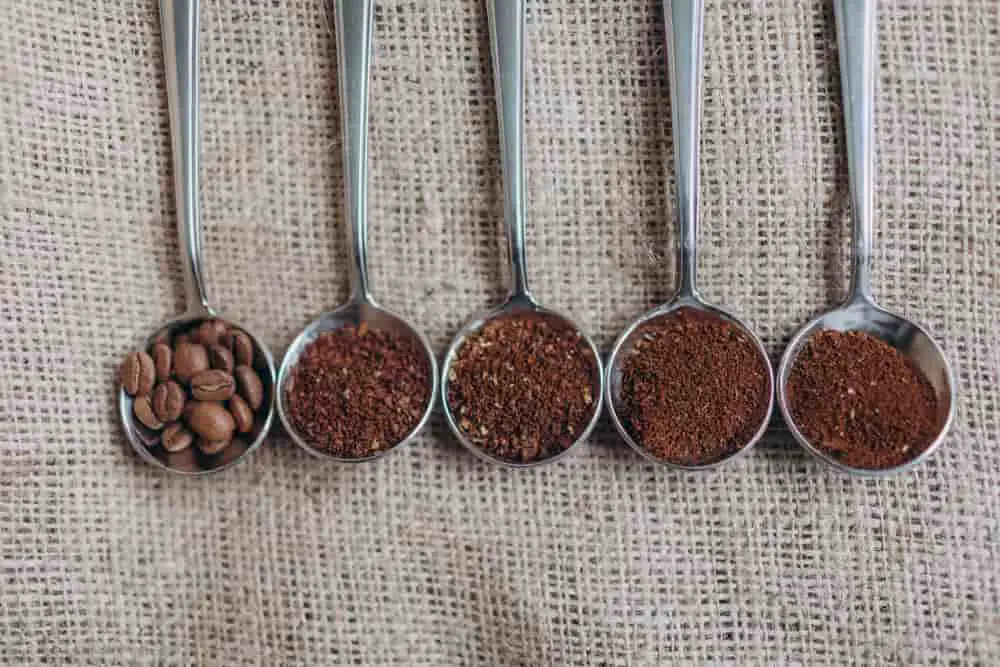
Remember that the type of grind has a direct influence on your drink and depends a lot on the coffee maker you are going to use.
There are many levels of grinding that can be achieved and each grinder can have a different scale, there is no standard.
For the sake of being practical, we will divide the grinding into 4 grades: coarse, medium, medium-fine and fine. And we will tell you how to identify each one.
The recommendation is to consume freshly roasted coffee beans of origin. It better preserves the aromas and other organoleptic characteristics of the coffee.
Coarse Grinding
The crushing will leave the coffee in larger pieces, so much so that if we touch them with the finger, they will feel like tiny stones that do not adhere to the fingers. It is used mainly for cold brewing and French press. This type of extraction takes longer.
The “cold brew” can last for hours, since the extraction is cold. While the French press can take around 6-8 minutes.
Medium Grind
When you feel the ground coffee, they will no longer feel like pebbles and traces of it will remain on our fingers. It is ideal if you are going to extract the coffee using a V60 or Chemex. This type of extraction, due to grinding and the temperature of the water, usually takes about 3 minutes.
Medium-fine Grinding
It is slightly thinner than the previous one. If you are a lover of the Aeropress, this is the measure you should use, since a greater pressure is applied during the extraction.
Fine Grinding
This grind is used to prepare coffee in the espresso machine. How can you know that it is fine?
Well, the feeling will be that when you feel this ground coffee, many particles will remain attached to the fingertips. For this type of preparation, a high precision grinder is required and with regulation that allows a fine level of grinding.
Always keep in mind that …
The size of the coffee bean determines the taste of the coffee: fine ground beans release many aromas and coarse ones provide more acidic flavors.
The shorter the exposure to hot water, the finer the grind must be to release the aromas quickly (espresso). And the longer the contact with the water, the coarser the grind must be so as not to produce a drink that is too impregnated, with a very bitter taste.
Machines for grinding coffee beans
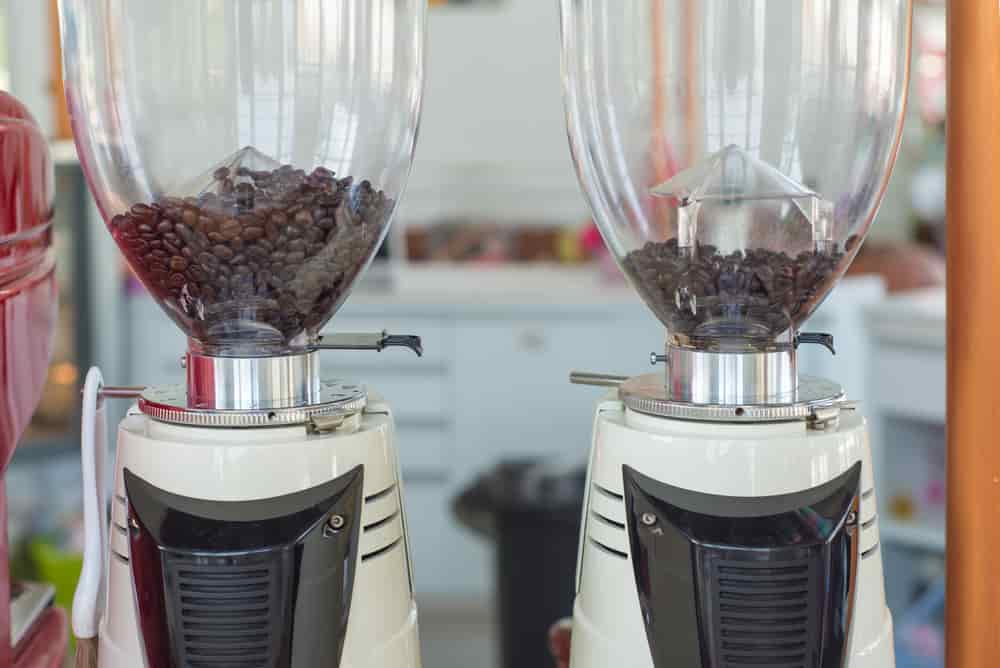
The essential instrument, of course, is the grinder. This can be manual or electric, with blades or grinding wheels, which exist on the market in a very wide range of prices. The important thing is to understand what type of grinding we need when preparing the coffee of our choice.
As we become more expert, we are looking for a grinder that allows us to obtain a more homogeneous grind and of different thicknesses. Now we explain the difference between the grinders.
Burr Grinder
It is the most recommended since it grinds the coffee in such a way that a greater uniformity is obtained. There are both manual and electric, and in both versions it allows to calibrate the thickness.
Manual grinders are easy to transport and cheaper. But as we want to prepare more coffee, for more people and more frequently, the manual can be impractical and in that case, an electric one is preferable.
Blade Grinder
The blade grinder, for its part, does not allow a uniform grinding. We will obtain larger pieces of grain than others. If we want a finer grind, it will be necessary to grind the coffee for a longer time, which will cause certain characteristics of the coffee to be lost. Coffee due to the friction that is generated. However, it is a valid option for beginners.
If you already got a grinder (preferably grinding wheels), now we are going to choose the right grind for the type of coffee maker you are going to use.
As a general rule, the finer the grind, the faster the coffee will be extracted, this is why espresso machines use a fine grind since, with 9 bars of pressure and hot water. The espresso is obtained in just 25-30 seconds approximately.
Final Opinion
Now that you have your specialty coffee beans and origin. You know how to distinguish the grinding levels and you have chosen the type of coffee you prefer to prepare. Do not forget to grind the coffee just before making the extraction. The place will be flooded with an exquisite aroma that more than one will crave the desire to share a cup of exquisite flavor.
Don’t have a grinder? Read our coffee grinder buying guide! Also discover the accessories, coffee makers, types of coffee and everything we have for you.
A. I. Moon
A.I. Moon, an experienced SEO Pythonista, spends his days coding and developing web applications to help business owners. A passionate coffee enthusiast, he believes that drinking coffee fuels his creativity and productivity. His day isn't complete without the rich aroma and invigorating warmth of a perfectly brewed cup. This love for coffee inspired him to found EspressoRivo, a platform dedicated to sharing his coffee knowledge and fostering a community of passionate aficionados.
